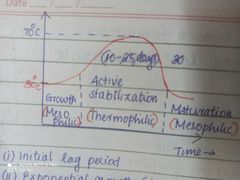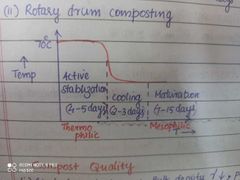![]()
![]()
![]()
Use LEFT and RIGHT arrow keys to navigate between flashcards;
Use UP and DOWN arrow keys to flip the card;
H to show hint;
A reads text to speech;
24 Cards in this Set
- Front
- Back
|
Technologies used for energy production |
Biomethanation & incineration |
|
|
Debris |
Bulky waste from construction sites |
|
|
------ method is used for sampling wastes to obtain a fairly homogenous sample for subsequent analysis |
Quartering |
|
|
---- of waste is carried out to determine the proportional of carbon, hydrogen, oxygen, sulphur |
Ultimate analysis |
|
|
_____ estimates the quantity & composition of solid wastes by recording the estimated volume and general composition of each load of waste |
Load count analysis |
|
|
Factors affecting solid waste generation rate |
Source reduction |
|
|
Distance between the containers/dustbin should not be more than ___ & that of containers /dustbin and house should not be __m |
500m & 250m |
|
|
Container colour |
Yellow- hazardous waste Blue - dry waste Green - wet easte |
|
|
Method for separation of steel and glass |
Steel - magnetic separation Glass - density blower |
|
|
Separation of plastic content (high fraction of PET & HDPE) |
Air classifier |
|
|
When the collected solid waste is mechanically reduced in size, the volume is not reducing |
True |
|
|
Dirty MRF has higher recovery rate than clear MRF. |
True |
|
|
Recommended processing of hospital waste |
Incineration |
|
|
Time spend for all non-poductive activities are accounted to off-route |
15% |
|
|
Haul time constanta a & b to calculate haul time (h/trip) are determined using the plot b/w |
Travel time (h) vs round drip distance(km) |
|
|
Delay due to traffic block |
Off route |
|
|
Composting |

- biological decomposition & stabilisation of organic waste
- composting => CO2+H20+ Heat +sludge (30-40%)
-3 stages 1. Initial lag period 2. Exponential growth (active phase) 3. Final decline =>curing phase or maturation
Factors affecting composting : 1. Temp Temp >70°C ;low speed. Temp = 35-50°C ; high speed
2.moisture content mc<12%; biological activities ceases mc=50-60%; optimum mc for composting
3. Particle size : d<1 c/m Decrease the particle size, increase the rate of composting
4.Nutrient C/N =30
C- energy sources N- building cell structure |
|
|
Type of composting |

1. In vessel composting : due to space constrain Growth:7-15 days Active Stabilisation: 10-15 days Maturation: 30-150 days 2. Rotary drum method stablisation : 4-5 days Active stablisation : 4-5 daysCooling :2-3 daysMaturation : 7-15 days Cooling :2-3 days Maturation : 7-15 days |
|
|
Quality of composting |
1. Good physical characteristic : bulk density decreases, void ratio & porosity increases 2. Contain humic substance 3. Well matured 4 . No pathogen 5. Optimum pH = 5.5-8 6. Should not Phytotoxicity ( Due to more E.C.) |
|
|
Vermicomposting |
- red wiggler (Eisenia fetida) - vermi cast : final product of vermi compost - vermi vash : water from vermi compost - optimum mc : 60-70% - optimum temp : 16-25°C - optimum pH = 7.5-8 |
|
|
Anaerobic digestion |
Digestate : left over after anaerobic digestion
Stages of anaerobic digestion 1. Hydrolysis (conver complex food to basic monomer) 2. Acidogenesis (monomer ---> volatile fatty acid) 3. Acetogenesis 4. Methanogenesis ( production of gas CH4, CO2 from acetate)
Psychophilic : temp <20°C Mesophilic : 20-45°C Thermophilic : 45-65°C
Nitrogen less ==> population less Nitrogen high ==> excess nitrogen produce NH3 which inhibits growth Pretreatment technique - improve stabilisation & yield. - break lignin wall 1. Mechanical pretreatment : (1mm-2mm), reduce particle size 2. Thermal pretreatment : 126-190°C heating 3. Chemical pretreatment : NaOH & Ca(OH)2 Alkali treatment --> acid--> oxidation 4. Biological pretreatment |
|
|
Anaerobic co-digestion (AnCOD) |
Simultaneous anaerobic digestion of 2 Or more homogeneous substrate to overcome disadvantage of more digestion |
|
|
Biogas digestor |
Closed container in which segregation & feeding takes place 1.Fixed dome type : Chinese type (Dheena bandhu model) 2. Floating dome type : indian type ( moving gas holder) 3. Bag type : taiwan type ( ballon type or long cylinder) |
|
|
Landfill |
Sanitary landfill : engineered facility for disposal Secured landfill : for disposal for hazardous waste
Life of landfill = active period (20-25 yrs) + closure & post closure period (15 yrs)
Cell : Volume of landfill material/day Daily cover : 6-12 inch of native soil Lift : Depth of cell over active area of landfill Bench/terrace : To maintain slope stability to landfill Landfill gases : CH4+CO2
Landfill methods : 1.excavated cell/trench method : trenches are lined, excavated soil as daily cover 2. Area method : when WT is high 3. Canyon/depression method : useful for hilly area
Landfill site consideration: Airport : 20km River :100m Pond & highway : 200m Public park :300m Habitat, water supply wells, railways : 500m
Available land area : min 20-25 : 500m from fault line fracture
© WT : bottom liner of landfill should be 2m above WT
Landfill size : Waste <1 metric tonne : 15-20 ha 1-2 metric tonne : 20-30 ha 2-3 metric tonne : 30-40 ha >3 metric tonne : >40 ha
|

